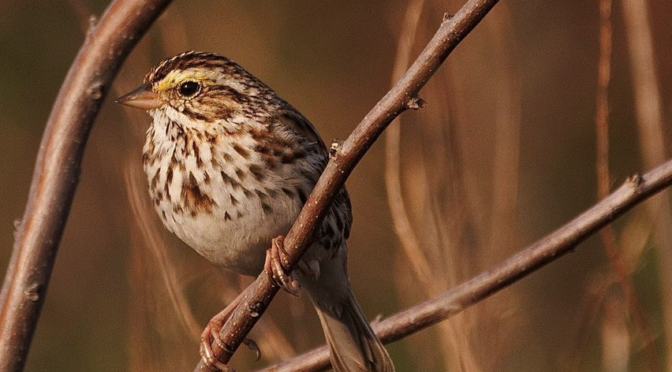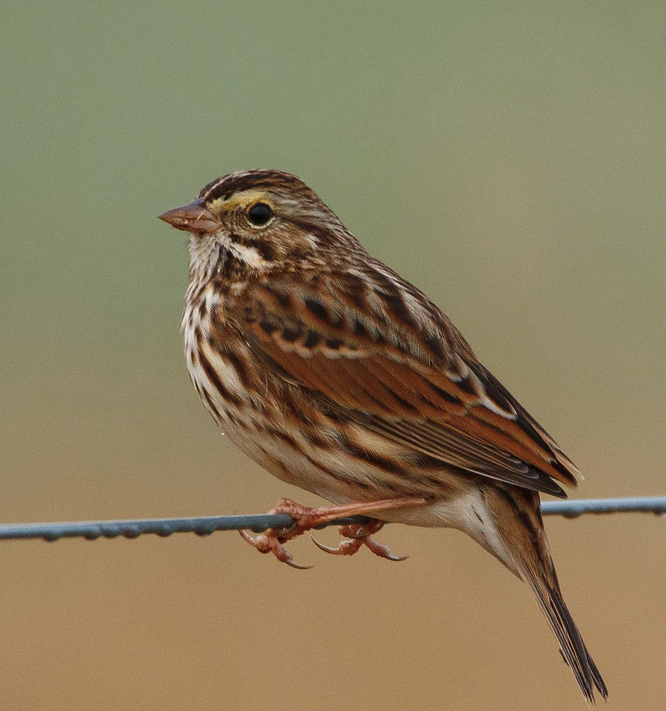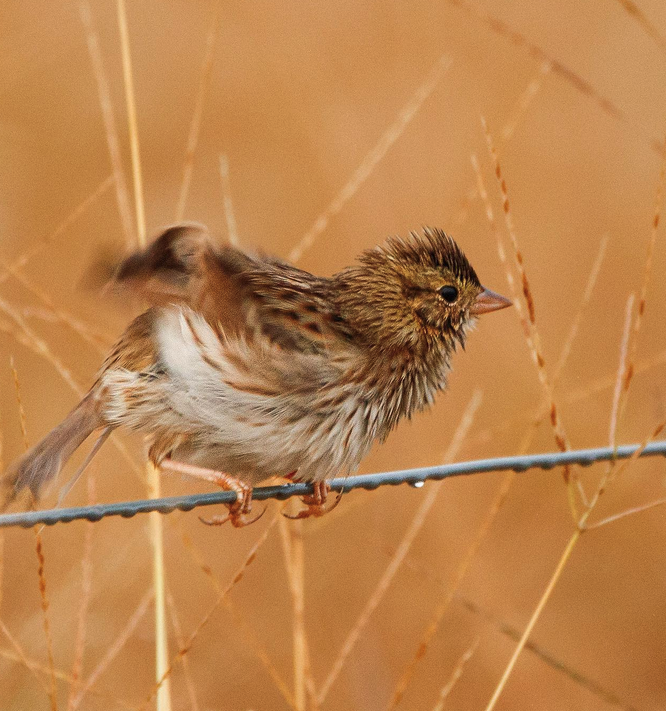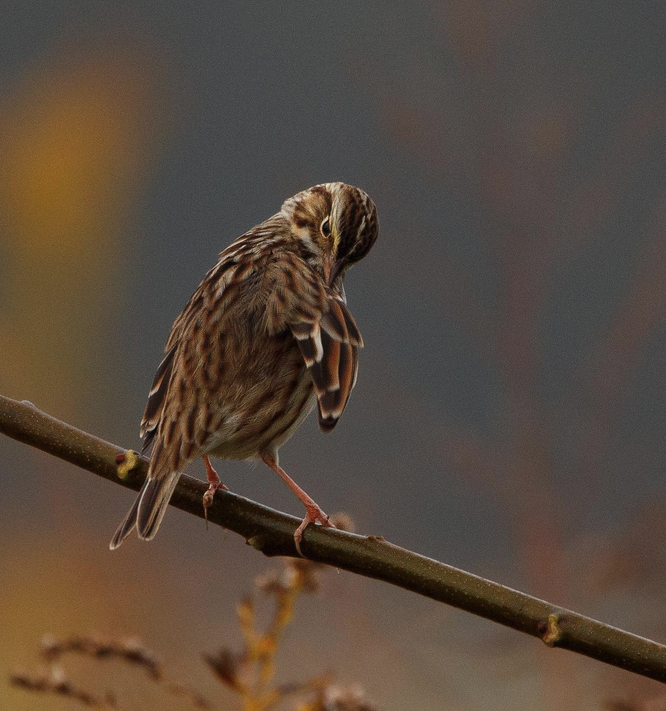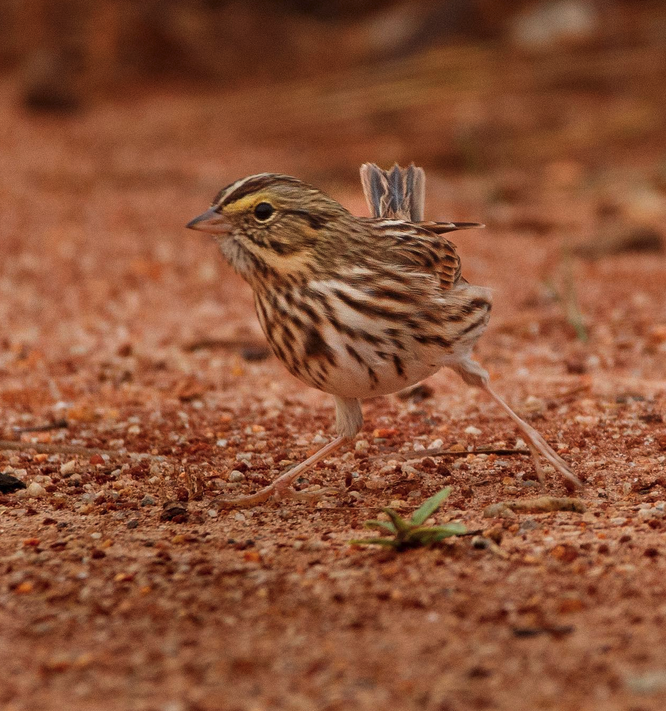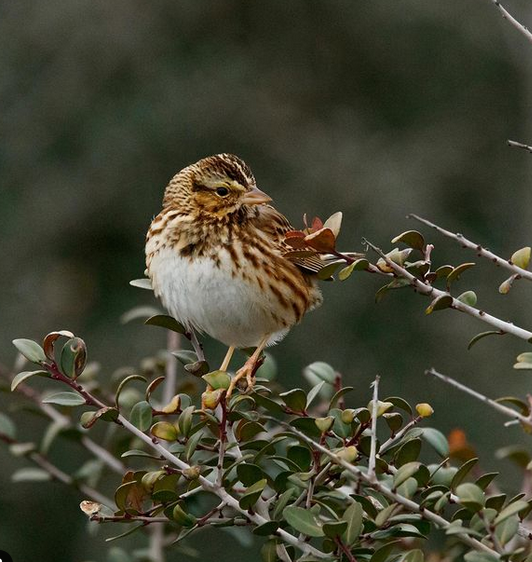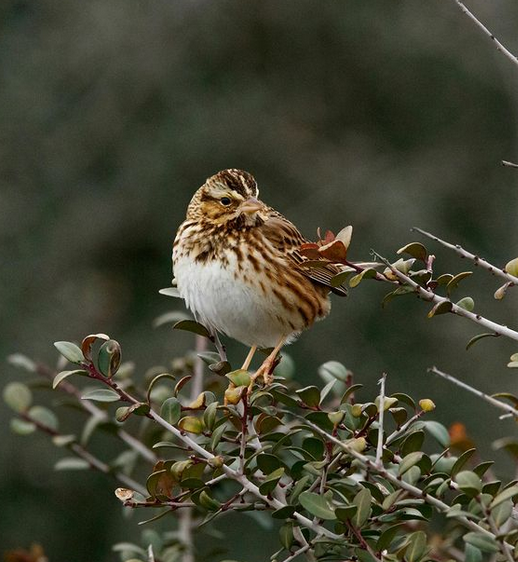By Sally SIko
While birding up at Barnegat lighthouse State Park in Eastern New Jersey. I spotted this sweet little Savannah Sparrow pecking on the jetty rocks.
Another birder (a local gentleman named Larry) was watching the bird as well and mentioned that this was likely an Ipswich sparrow. He explained to me that the Ipswich sparrow was a sub species of the Savannah, and was only found along the north Atlantic coast during the winter.



I was intrigued immediately, and upon further research learned that there are actually 28 distinct different subspecies of the Savannah Sparrow!
Each subspecies varies a bit in bill size and degrees of darker/ lighter coloration but all share a general overall look with brown striping on their breasts.
The thing to look for is that distinctive yellowish spot on the lore in front of and on top of their eye.
The first 3 photos in this post show the Ipswich subspecies that I found in New Jersey, the second two photos below show a Savannah sparrow that I photographed in Raleigh a couple of weeks ago.


As you can see, they look similar, but the Ipswich variety appears a bit lighter overall in color than the one I photographed in North Carolina.
This encounter was a happy reminder that there is always something new to learn about the birds we see everyday.
That’s a darn good reason to keep at this IMO 😉
Like many sparrow species, Savannahs are voracious insect eaters and prefer to forage in habitats of open short grass fields containing piles of scrubby brush.
As seen here, they also inhabit beaches, tidal salt marshes, ponds and estuaries during the winter where the likely-hood of finding a six or eight legged snack near the water is greatly increased.
Look for them this winter in central and eastern regions of the mid Atlantic and New England from now through May and again in June-August in the mountains of western part of the Carolinas.
By the way, I’ve added more than 80 new birding tour dates to my Best Life Birding trip schedule.
Check out the calendar below and book your next birding adventure with me today!
Photos by Sally Siko of @bestlife_birding captured on my mighty mirrorless monster, the @canonusa #R5


